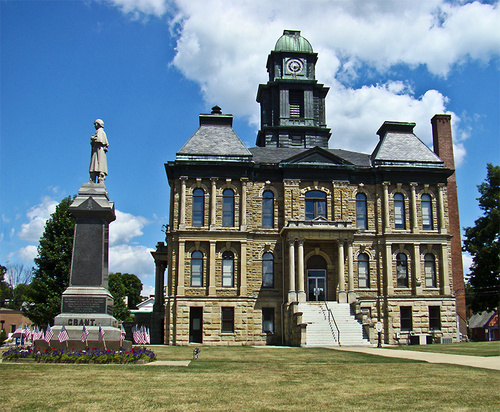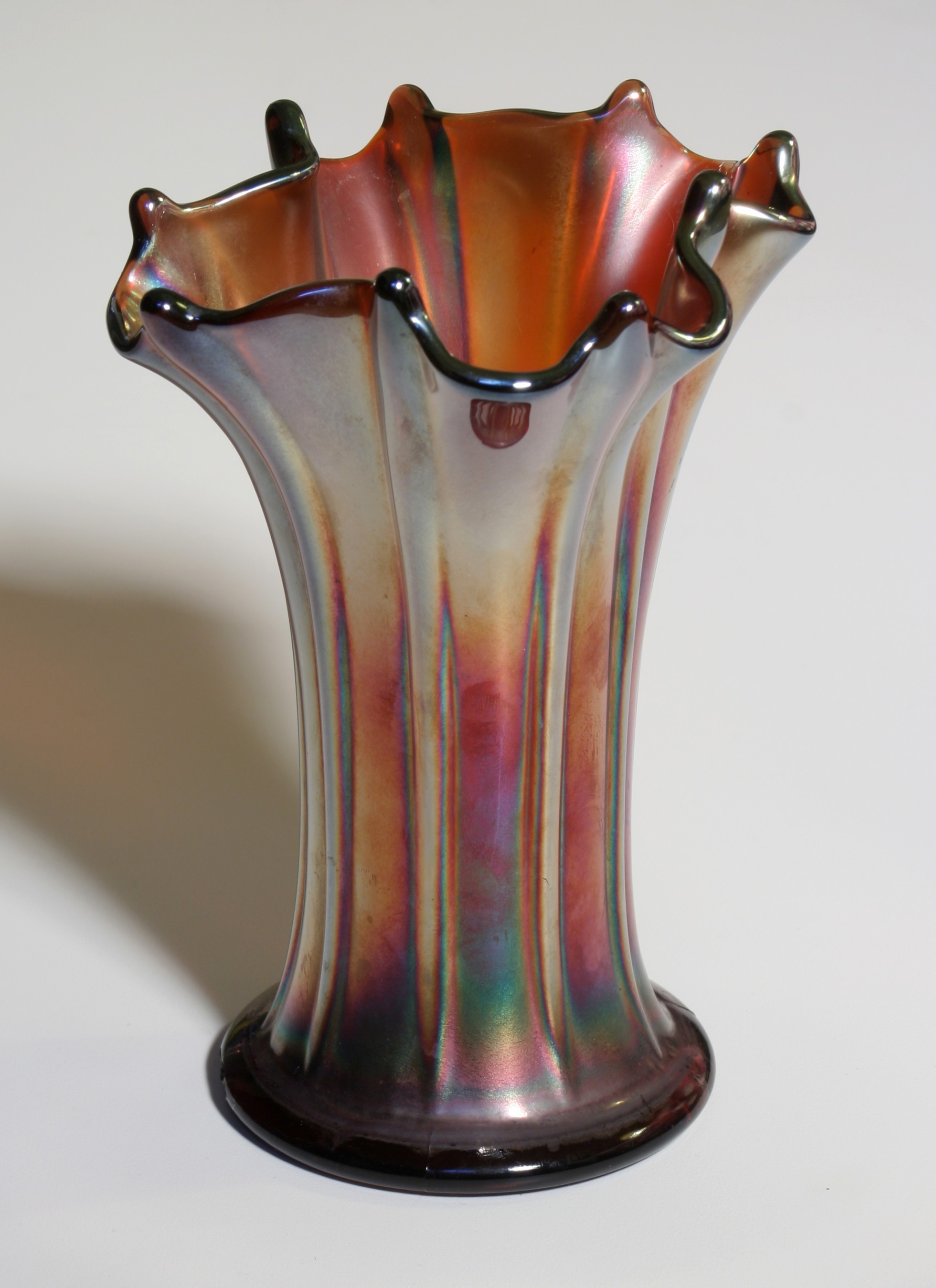|
Millersburg Glass Company
The Millersburg Glass Company was started in 1908 by John W Fenton in Millersburg, OH. History In early 1908 John W. Fenton left the Fenton Art Glass Company after a falling-out with his brother Frank Fenton. Though he remained on the Fenton board of directors. He had helped found Fenton Art Glass with his brother in 1905 . The Millersburg factory was located in Millersburg, OH and was constructed quickly. The factory was state of the art for its day and opened in 1909. John was not the best businessman, he was more of a promoter. The factory was in an obscure location and the company folded in 1911. The company was sold to Samuel Fair and was reopened as the Radium Glass Company. This company only lasted one year and closed in 1912. Colors The company is well known for its Carnival glass. Its first carnival color was Radium. It is known for its bright and shiny finish. The main colors made by Millerburg are green, amethyst, and marigold. They also made vaseline, blue, lavender, ... [...More Info...] [...Related Items...] OR: [Wikipedia] [Google] [Baidu] |
Millersburg, Ohio
Millersburg is a village in Holmes County, Ohio, United States, and its county seat. Located south of Cleveland, it is in the heart of Ohio's Amish Country and is part of a large regional tourism industry. The population was 3,151 at the 2020 census. Holmes County Airport, located two miles southwest of Millersburg, serves the county. History The Old Town of Millersburg was laid out by Adam Johnson and Charles Miller of Coshocton County in November 1815. It was located at the north side of the northwest quarter of Section 12, township 9, range 7 adjoining the School Lands, and very near the northwest corner of said quarter section. The Northwest corner, lot 1, was a little over the hill towards the present mill dam and the northeast corner, lot 9, was about 100 steps west of the present Wooster Road. The center of the town was very nearly the center of Walkups Addition. The principal streets were Bridge, High and Market, each four rods wide. The direction of the former was ... [...More Info...] [...Related Items...] OR: [Wikipedia] [Google] [Baidu] |
Fenton Art Glass Company
The Fenton Art Glass Company is a glass manufacturer founded in 1905 by brothers Frank L. Fenton and John W. Fenton. History The original factory was in an old glass factory in Martins Ferry, Ohio, in 1905. The factory at one time was owned by the former West Virginia Glass Company. At first they painted glass blanks from other glass makers, but started making their own glass when they became unable to buy the materials they needed. They moved across the Ohio River to Williamstown, West Virginia, and built a factory in 1906. The first year for glass production was 1907. In 1908 John Fenton left the company and founded the Millersburg glass company in Millersburg, OH. Frank Fenton was the designer and decorator. From 1905 to 1920, the designs made there were heavily influenced by two other glass companies: Tiffany and Steuben. But the many different colors were the work of Jacob Rosenthal, a famous glass chemist who is known for developing chocolate and golden agate glass. Towa ... [...More Info...] [...Related Items...] OR: [Wikipedia] [Google] [Baidu] |
Carnival Glass
Carnival glass is moulded or pressed glass to which an iridescent surface shimmer has been applied. It has previously been referred to as aurora glass, dope glass, rainbow glass, taffeta glass, and disparagingly as 'poor man's Tiffany'. The name Carnival glass was adopted by collectors in the 1950s as items of it were sometimes given as prizes at carnivals, fetes, and fairgrounds. However, evidence suggests that the vast majority of it was purchased by households to brighten homes at a time when only the well-off could afford bright electric lighting, as its finish catches the light even in dark corners. From the beginning of the 20th century, carnival glass was mass-produced around the world, but largely and initially in the U.S. It reached the height of its popularity in the 1920s, though it is still produced in small quantities today. Carnival glass gets its iridescent sheen from the application of metallic salts while the glass is still hot from the pressing. It was designed t ... [...More Info...] [...Related Items...] OR: [Wikipedia] [Google] [Baidu] |


